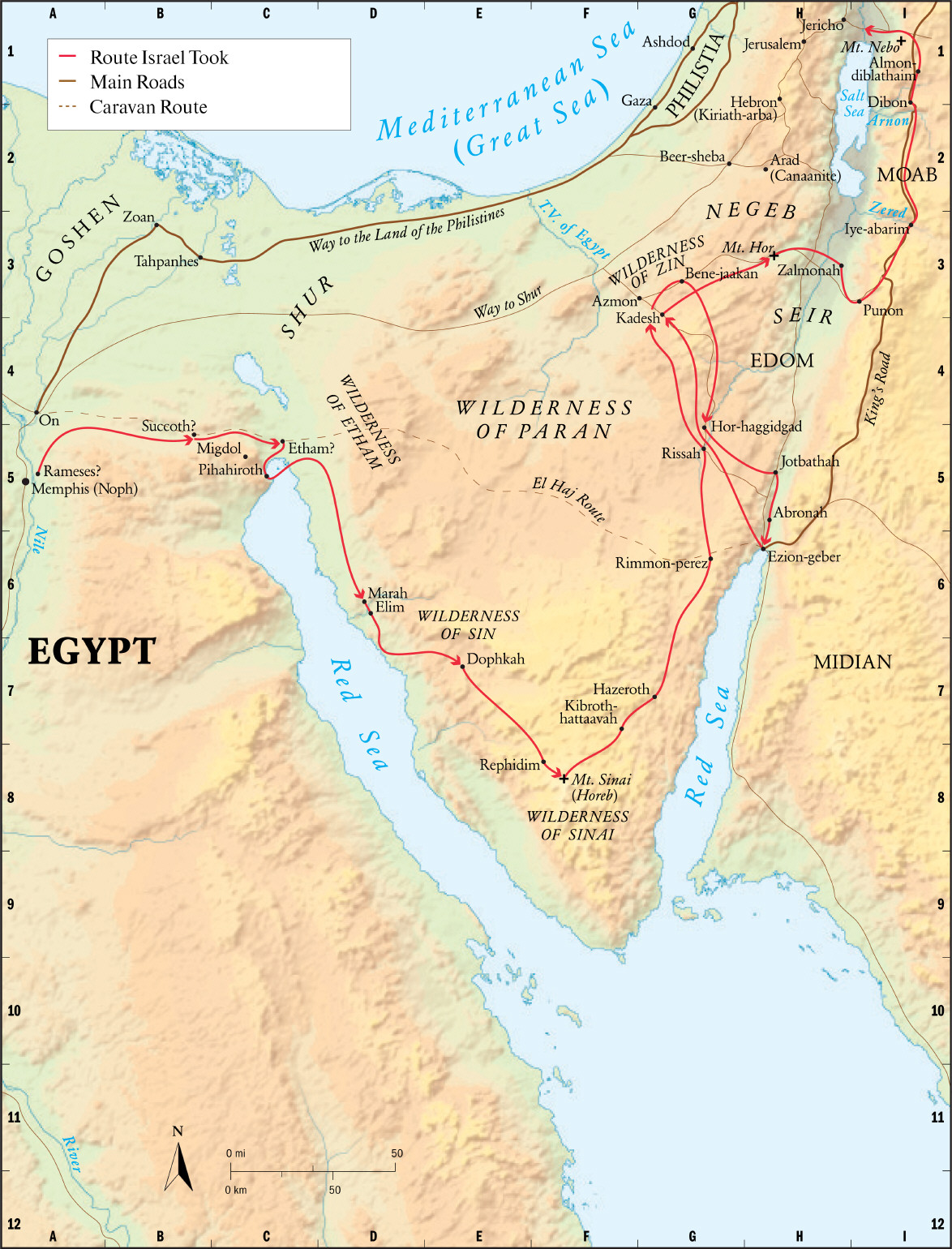Where Is the Real Mount Sinai?
Where is the real Mount Sinai? Many people have been led to believe that Mount Sinai, where YHVH gave Israel the Ten Commandments but more properly the Covenant and where Israel wandered forty years, is located in the Sinai Peninsula in modern-day Egypt, as seen from the image below.

And if this is the real Mount Sinai, we should expect to find artifacts left by the Israelites in the Sinai Peninsula. After all, it is believed they had wandered through the peninsula forty years, and they must have left at least something that would lead us to identify this mountain as the place where YHVH made a covenant with Israel and consequently to prove that that was the real Mount Sinai. But no artifacts have ever been found in Sinai. Not even one. This led many historians to discredit the Exodus story in particular and the Bible in general as a myth. To add to the problem, the majority of people of faith, Jews and Christians, also believe that this is the real Mount Sinai where Elohim gave the Ten Commandments to Mosheh (Moses), and the bibles have been printed with maps showing the route through the Wilderness of Sin.
Below is an image of such a map with the traditional Mount Sinai that can be found in almost every Bible.
But is this the real Mount Sinai of YHVH?
Everything began with the incorrect identification of the Red Sea (Yam Suph in Hebrew) assumed to be at what is now the Suez Canal in Egypt. But, as we know, the Suez Canal had not been in existence then. It was built by the Brits many centuries later. Known as Yam Suph in the ancient Hebrew manuscripts, the name of this sea was changed to Red Sea in the Septuagint, a Greek translation of the Tanach. Thence, the name “Red Sea” was retained in all other translations, including KJV. Over the centuries, the Bible scholars have associated the word “suph” with a Egyptian word, which means papyrus, hence “sea of reeds” which is another common translation of Yam Suph. The truth of the matter is that the meaning of “yam suph” has been lost in history and we cannot say with certainty what it really means. Therefore, this assumption led many to believe that the meaning of the Biblical “Yam Suph” was sea of reeds and since there was no papyrus in the Red Sea, the scholars have proposed crossing of the Red Sea at reed marshes near what is now the Suez Canal.
But if this is the correct place of the parting and crossing of the sea, as recorded in the Exodus story, then we must ask the question as to the real need of dividing the waters of reed marshlands and lakes. And we need to admit that it would not take a miracle from heavens to part the waters of marshlands and lakes. The Brits connected the waters of Mediterranean Sea and Indian Ocean and that was not even considered “a miracle” back then. The Suez Canal is well seen from the image below.
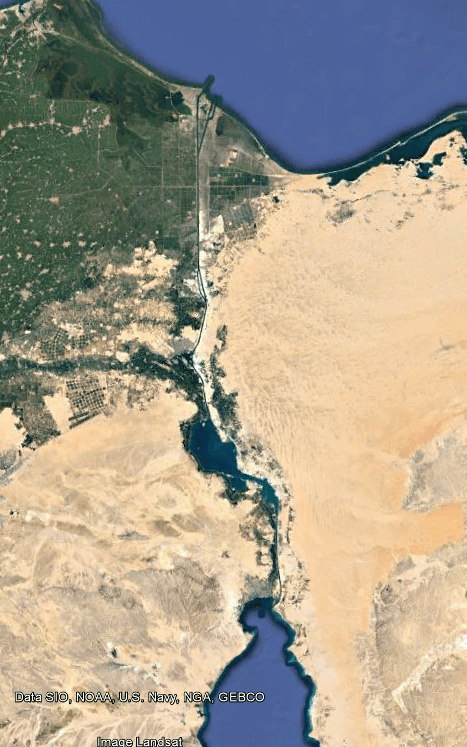
The Red Sea separates Africa from the Arabian Peninsula. As seen from the image below, the northern part of the Red Sea has two arms: the Gulf of Suez to the west and the Gulf of Aqaba to the east. The Gulf of Suez along with the Suez Canal divides Egypt into two parts: the mainland and what is known today as Sinai. But Egypt was not divided in the time of the Exodus; Egypt was one contiguous land.
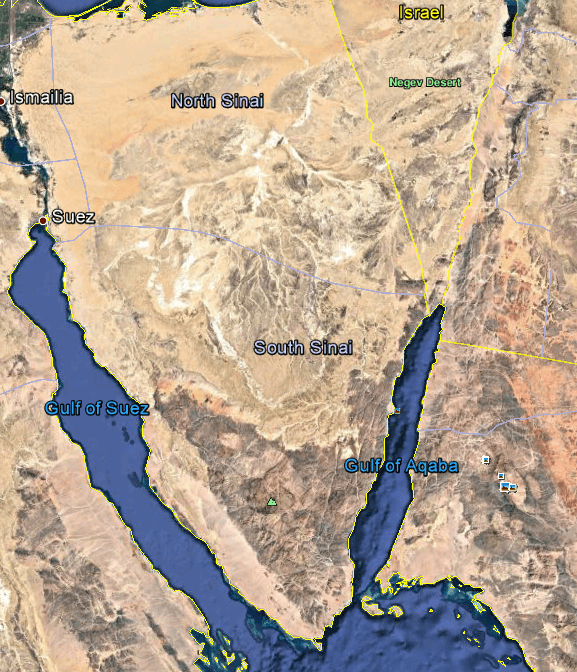
Also, the Exodus account of Exo 13:18 says that the Israelites went up out of the land of Egypt:
But God led the people about, through the way of the wilderness of the Red sea: and the children of Israel went up harnessed out of the land of Egypt. (Exo 13:18 KJV)
These two facts namely that Egypt was one contiguous land and Israel left Egypt are important to know, because we will used them in our investigation. Let us move on, as the Israelites moved on.
And they took their journey from Elim, and all the congregation of the children of Israel came unto the wilderness of Sin, which is between Elim and Sinai, on the fifteenth day of the second month after their departing out of the land of Egypt. (Exo 16:1 KJV)
Now, let us take a close look at this verse and the image of the Sinai Peninsula above. Exo 16:1 is saying that since the Israelites had left their dwellings in Egypt on the fifteenth day of the first month, they journeyed one month until they came to the wilderness of Sin, which is between Elim and Sinai. Where is the wilderness of Sin, which we are told is between Elim and Sinai? And where is Elim? If they arrived in the wilderness of Sin, they must have departed from Elim too.
And they departed from Marah and came to Elim. And at Elim were twelve springs of water and seventy palm trees, so they camped there. And they departed from Elim and camped by the Yam Suph. And they departed from the Yam Suph and camped in the Wilderness of Sin. (Num 33:9-11)
From the context of the account of Israel’s camps in Numbers 33, we see that the camp at Elim was the sixth, the Yam Suph is the seventh camp, and the camp at the Wilderness of Sin is the eighth. The Wilderness of Sin is not to be confused with the Wilderness of Sinai, at Mount Sinai, which is the twelfth camp. This camp where the Covenant was made and where the Israelites were stationed for eleven months and twenty days, and departed on the twentieth day of the second month of the second year. Therefore, we see that the Wilderness of Sin and the Wilderness of Sinai are two different places and as seen from the traditional map they have been confused, which consequently led to the misunderstanding of the whereabouts of the real Mount Sinai.
For more information on the chronology of the Exodus and Israel’s camps in the wilderness, refer to chapters The Beginning of Months and Israel’s Journeys in the Wilderness of the present author’s book The Reckoning of Time.
Therefore, if Sinai is where the modern-day maps say it is, then we have to admit that we are encountering a problem that is hard to solve. We need to explain as to why it took so long for Israel to travel such a short distance from Goshen, which is by the Nile River, to cross the marshlands, and to come to the Wilderness of Sin, according to the traditional maps. And Mount Sinai, where they camped and received the Covenant is even further away. To add to the problem, we understand from the context of Exo 16:2-3 that the Israelites had already left Egypt, and they grumbled against Mosheh and Aharon to return back to Egypt:
And all the congregation of the children of Israel grumbled against Mosheh and Aharon in the wilderness. And the children of Israel said to them, “If only we had died by the hand of Yehovah in the land of Egypt, when we sat by the pots of meat and when we ate bread to satisfaction! For you have brought us out into this wilderness to put all this assembly to death with hunger.” (Exo 16:2-3)
If the traditional maps and routes of the Exodus were correct, why would the text say that the Israelites left Egypt, while they were still in Egypt? As we advance in our investigation, we will prove that what is today the Sinai Peninsula was then an Egyptian territory, as it is today. So, there must be something wrong in the tradition!
Dr. Lennart Möller, a professor at the Research Laboratory of Analytical Toxicology, Sweden, and a scholar in Biblical archeology, has suggested a new location of the crossing of the Yam Suph in a region far from the traditional site of marshlands. In his book, The Exodus Case, New Discovery of the Historical Exodus, 2008 3rd extended edition, p. 183, Dr. Möller puts forward the idea of a crossing at Nuweiba Beach on the coast of the Gulf of Aqaba and crossing over to ancient Midian located in present day northwest Saudi Arabia. The images below show the location of Nuweiba Beach.
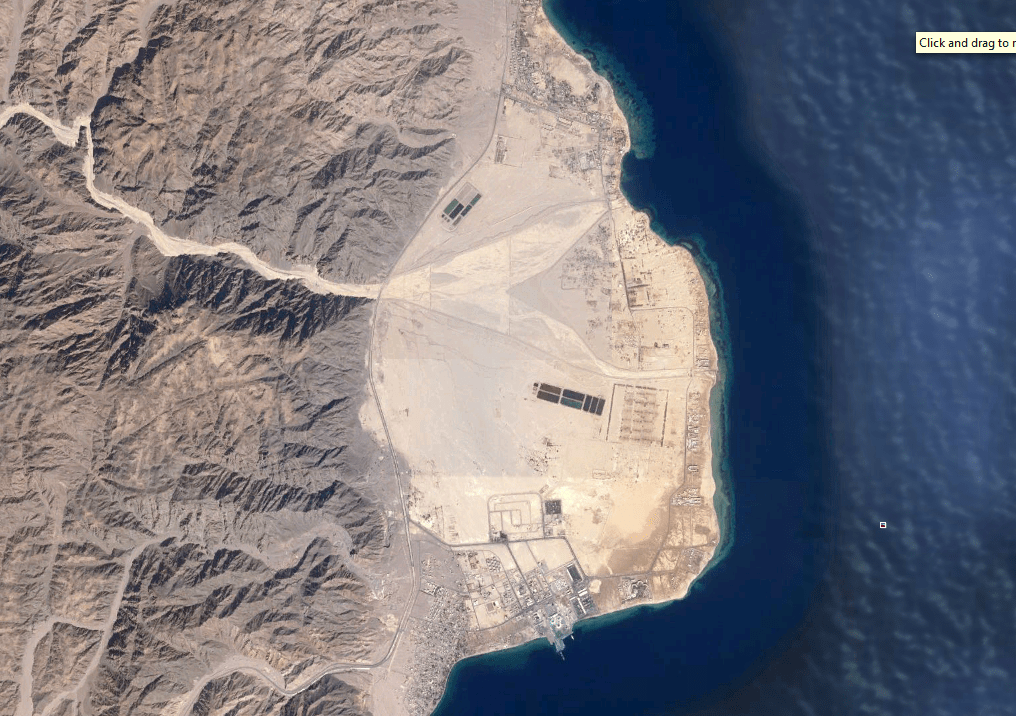
Nuweiba Beach on the coast of the Gulf of Aqaba

Another view of Nuweiba Beach from Saudi Arabia
From these images we see that the area of Nuweiba Beach is large enough to accommodate a people of about three million, an estimate of the possible number of Israelites who left Egypt. This is the place where the Israelites were “trapped” between the sea and the pursuing Egyptian army. According to the Biblical account, the Egyptians pursued the Israelites to the very coast of the Gulf of Aqaba, because that was and is still an Egyptian territory. This is the place where the column of fire (which was leading the people) moved from the front to the back to stand between the Israelites and the Egyptians, thus blocking the wadi snaking between the mountains and preventing the Egyptian army from overtaking the Israelites. This dry streambed still exists even today and remains dry except during the rainy season. The image above clearly confirms the Biblical Account that this must be the real Yam Suph, not the marshlands where the Suez Canal is now located. Having said that, we are coming to the real crossing and real place where the Egyptian army was drowned in the deep water of the Yam Suph, something that could not have happened in the shallow marshlands of the traditional place. Not surprisingly, the archaeologists have found Pharaoh’s chariot on the bottom of this crossing. And more artifacts are following below.
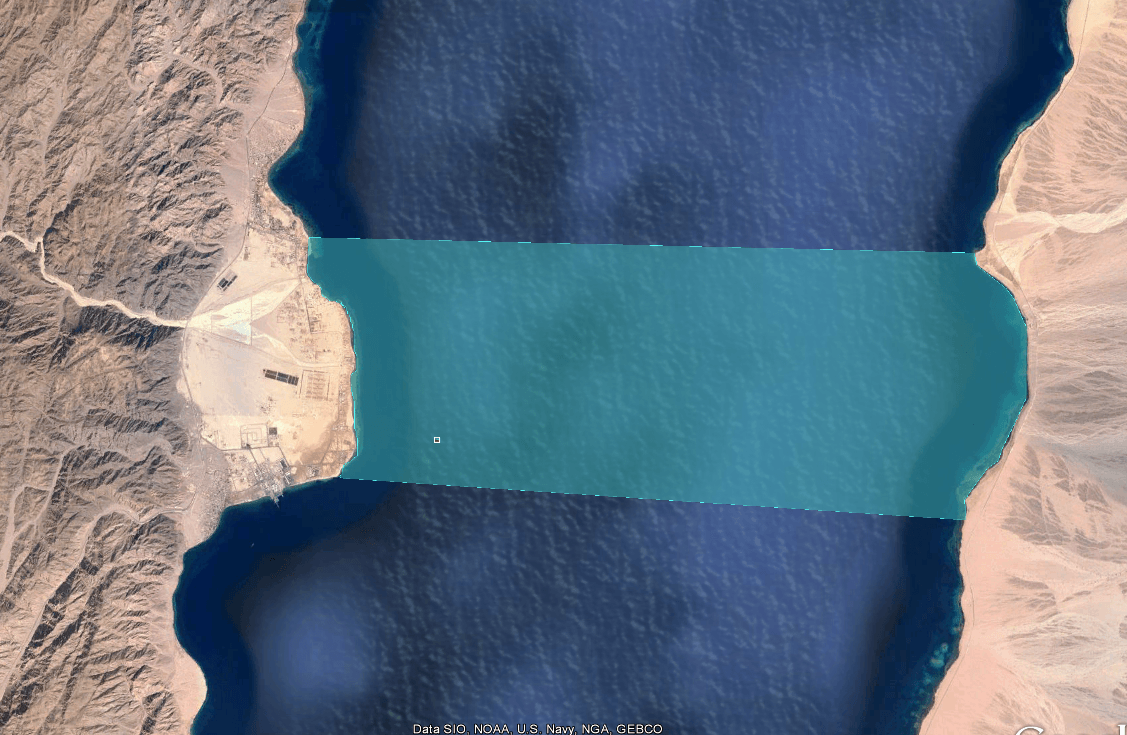
The crossing at Nuweiba Beach
So, if the Gulf of Aqaba is the real Yam Suph and Nuweiba Beach is the real crossing, where is the real Mount Sinai? The real Mount Sinai is in Arabia.
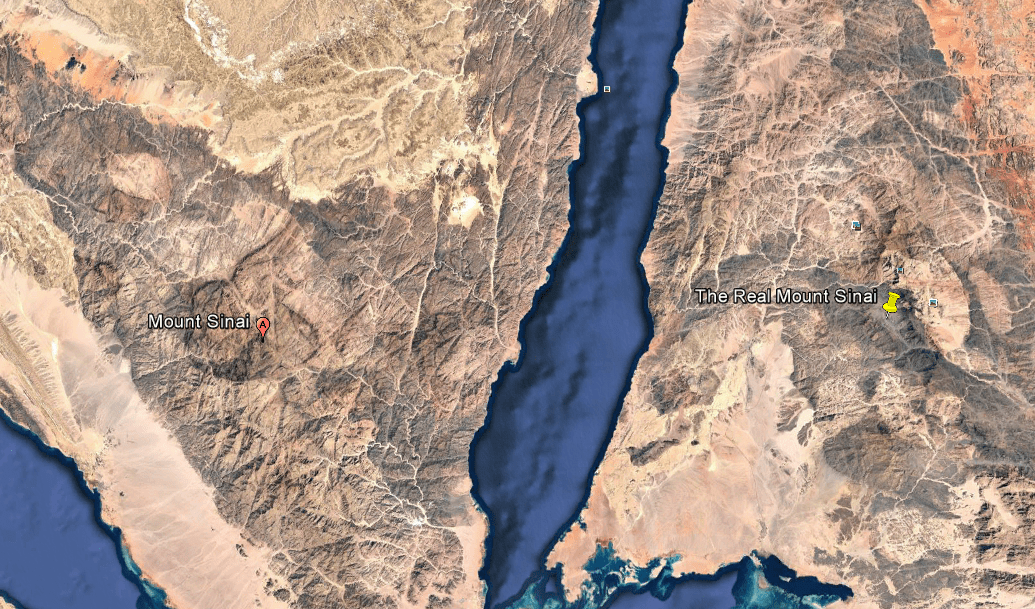
The Gulf of Aqaba between Egypt and Saudi Arabia
The present author remains faithful to the Scripture and will support his view again with more Scripture. And as we see this will be proven to be the correct location of the real Mount Sinai, the mountain of YHVH. How do we know that the real Mount Sinai is in Arabia and not in Egypt? We find the evidence in Shaul’s (Paul) epistle to the Galatians, as we read thus,
For this Agar is mount Sinai in Arabia, and answereth to Jerusalem which now is, and is in bondage with her children. (Gal 4:25 KJV)
From this we conclude that because Apostle Shaul clearly says that Mount Sinai is in Arabia, not in Egypt.
The first century Jewish priest, a general who led the revolt of the Jews against the Romans, and later a Roman historian, Flavius Josephus (37-100) wrote in his Antiquities of the Jews, Book 2, 12:1 the following regarding the region where Mosheh escaped to when he fled Egypt:
NOW Moses, when he had obtained the favor of Jethro, for that was one of the names of Raguel, staid there and fed his flock; but some time afterward, taking his station at the mountain called Sinai, he drove his flocks thither to feed them. Now this is the highest of all the mountains thereabout, and the best for pasturage, the herbage being there good; and it had not been before fed upon, because of the opinion men had that God dwelt there, the shepherds not daring to ascend up to it; and here it was that a wonderful prodigy happened to Moses; …
The Biblical account (Exo 3:1) testifies that Yithro (Jethro) the father-in-law of Mosheh was a priest of Midian. And indeed, when Mosheh fled Egypt, he fled to Arabia where he lived forty years until YHVH called him to return back to Egypt and take His people out of slavery (Exo 4:19). From these two accounts we see that Midian was a land outside of Egypt where Mosheh fled. And Mosheh did flee Egypt. If Sinai were where most of the Bible maps claim Sinai is, and not in Midian, then Mosheh had never fled Egypt. By the same token, if Sinai were where the Bible scholars claim Sinai is, then, we have to admit, Israel had never left the slavery of Egypt and had wandering forty years in Egypt undisturbed by the Egyptians. That does not make a lot of sense. Therefore, the real Mount Sinai, the mountain of YHVH, is in Arabia, exactly as Apostle Shaul says it is.
Are there any proofs such as artifacts, besides Shaul’s account, that can validate what the Apostle has said (as if Apostle Shaul needs to be validated)? The images below are of the real Mount Sinai in Saudi Arabia where YHVH made the Covenant with Israel.
And Mosheh brought the people out of the camp to meet with Elohim, and they stood at the foot of the mountain. And Mount Sinai was in smoke, all of it, because Yehovah descended upon it in fire. And its smoke went up like the smoke of a furnace, and all the mountain trembled exceedingly. (Exo 19:17-18)
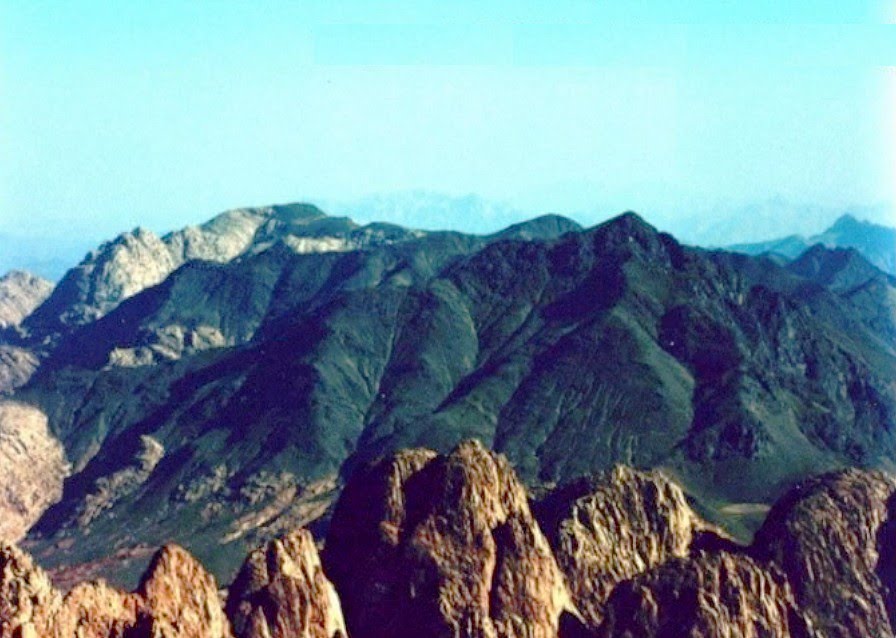
The real Mount Sinai still looks burned after so many years after the Exodus
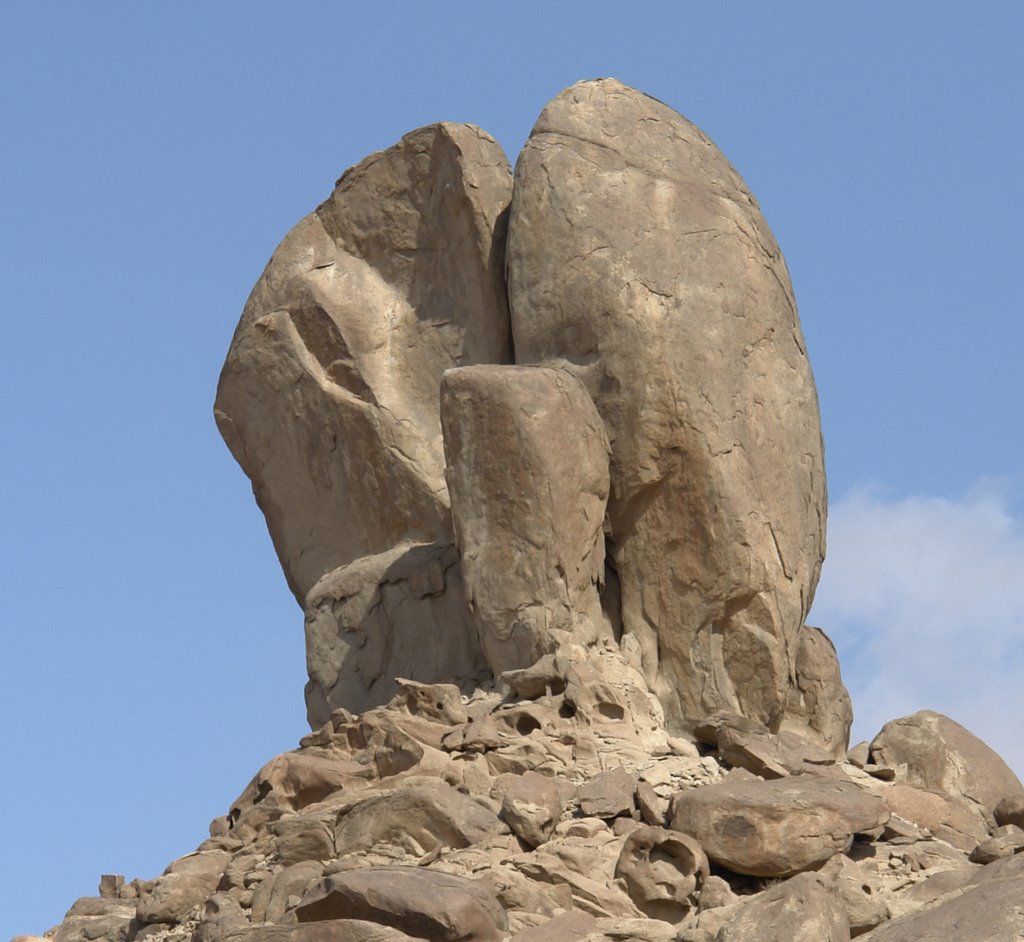
The cleft of the Rock
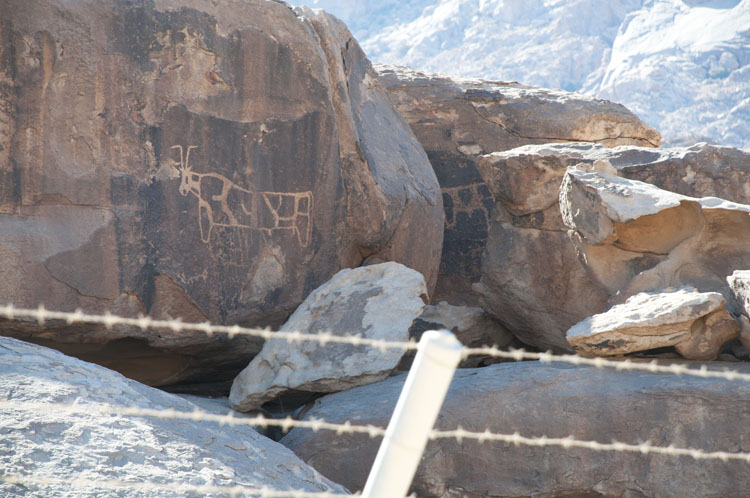
The images of the golden calf which Israelites left at Mount Sinai (barbed wired by the Saudis)
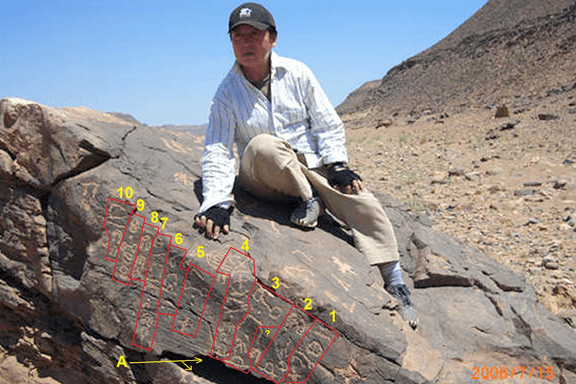
In 2006, Dr. Kim (on the image above) travelled in northwest Saudi Arabia, when he came across this large stone with the inscriptions on it, including a Hebrew Menorah. In 2014, Jeff Benner of the Ancient Hebrew Research Center, has made a translation of the inscriptions, which reads the following:
“Stretch out to An from ???, Wandering to Ahhad. Like {a} maiden of god I will stand, to wander now ??? and he will build for {a} calf who {is} to melt, Tsophen, will expire without bitterness.”
It is interesting to note in this inscription the Biblical keywords associated with the Exodus story: “wandering, God, molten or melted calf.” These inscriptions cannot just appear accidentally in Saudi Arabia. The Israelites must have been there. Only people who had lived in Arabia could have left such artifacts behind. How, therefore, have we been misled to believe that the mountain where YHVH made the Covenant with the descendants of Avraham, Yitzhak, and Ya’akov, is in Egypt? Everything started with Constantine’s mother Helena.
Constantine the Great, Emperor of Rome, established a new religion, but his mother Helena established a new “biblical” archeology. She was the one who said that “Sinai” was in Egypt. She was the one who required a church to be built in “Sinai”; a church that still exists today in Egypt. She was the one who changed the Biblical account, and the Brits just named it “Sinai”, and everyone followed ever since, and no one even questioned it.
Are there more Scriptural validations that what the world calls “Sinai” is actually not the real Mount Sinai, but an Egyptian land. Let us read:
And the king of Egypt came not again any more out of his land: for the king of Babylon had taken from the river of Egypt unto the river Euphrates all that pertained to the king of Egypt. 2Ki 24:7
Hence, we understand that the land from the river of Egypt unto the river Euphrates all that pertained to the king of Egypt. This included “Sinai.”
Also, at the same time Solomon kept the feast seven days, and all Israel with him, a very great congregation, from the entering in of Hamath unto the river of Egypt. 2Ch 7:8 (1Ki 8:65-66)
Hence, we understand that King Solomon conquered “Sinai” from Egypt.
Remember what Amalek did unto thee by the way, when ye were come forth out of Egypt; Deu 25:17
Hence, we understand that Amalek attacked Israel’s camp after the Israelites came out of Egypt, on the other side of the Yam Suph (the Gulf of Aqaba).
And Saul said unto the Kenites, Go, depart, get you down from among the Amalekites, lest I destroy you with them: for ye shewed kindness to all the children of Israel, when they came up out of Egypt. So the Kenites departed from among the Amalekites. 1Sa 15:6
And Saul smote the Amalekites from Havilah until thou comest to Shur, that is over against Egypt. 1Sa 15:7
And David and his men went up, and invaded the Geshurites, and the Gezrites, and the Amalekites: for those nations were of old the inhabitants of the land, as thou goest to Shur, even unto the land of Egypt. 1Sa 27:8
Hence, we understand that Amalekites lived on the other side of the Yam Suph (the Gulf of Aqaba), not in Egypt.
From Sihor, which is before Egypt, even unto the borders of Ekron northward, which is counted to the Canaanite: five lords of the Philistines; the Gazathites, and the Ashdothites, the Eshkalonites, the Gittites, and the Ekronites; also the Avites: Jos 13:3
All those nations, which Israel was commanded to rid of, lived in a land before Egypt.
And their southern border began at the edge of the Salt Sea, from the bay that faces southward. And it went out to the southern side of the Ascent of Aqrabbim, passed over to Tsin, and went up on the south side of Qadesh Barnea, and passed over to Chetsron, went up to Adar, and went around to Qarqa, and passed over to Atsmon, and went out to the wadi of Egypt, and the border ended at the sea. This is your southern border. (Jos 15:2-5)
Hence, we understand that the southern border of the land Yehoshua (Joshua) conquered was the wadi of Egypt (not to be confused with the Nile River; see the traditional map). Joshua had never been given the Egyptian “Sinai”
In conclusion, we see that all these Scriptural evidences refer to the ancient border between Egypt and Israel is pretty much the same as the modern-day border between the two countries, therefore, “Sinai” has always been an Egyptian territory, and since the Israelites had left the slavery in Egypt, they must have gone to the real Mount Sinai (in Arabia) where YHVH made the Covenant with free people.
Navah
May we merit seeing the coming of our Mashiach speedily in our days.

